
The Red Blood Cell structure and function (Pathology)
Further reading: https://www.ncbi.nlm.nih.gov/books/NBK9898/
-
An RBC is essentially a bag of...?
Haemoglobin
-
What is the average diameter of an RBC? Is it able to deform?
8 microns in size, and is able to deform and pass through 3 micron capillaries or reticuloendothelial system without fragmentation.
-
What 3 things does the cell membrane consist of?
-Proteins
-Lipids
-Carbohydrates
-
What are the % proportions of these components of the Red cell membrane?
-Proteins (50%)
-Lipids (40%)
-Carbohydrates (10%)
-
What is the structure of the red cell membrane?

-A semi-permeable lipid bilayer; with proteins scattered throughout:
+an outer hydrophilic portion composed of glycolipids. Glycoproteins and proteins
+A central hydrophobic layer containing proteins, cholesterol and phospholipids
+An inner hydrophilic layer of mesh-like cytoskeletal proteins to support lipid bilayer
-
What are the lipid components of the red cell membrane?
-Phospholipids
-Cholesterol
-Sphingolipids
-
What are the % proportions of these components of the lipid Red cell membrane?
-Phospholipids (60%)
-Cholesterol (30%)
-Sphingolipids (10%)
-
State some information about phospholipids and the Membrane (7 points)
-Have fatty acid tails that are hydrophobic
-Have a phosphate group head that is hydrophilic
-Arranged in a bilayer
-Asymmetric phospholipid distribution
-Unesterified free cholesterol between
-Uncharged phospholipids of outer layer (Phosphatidyl choline and Sphingomyelin)
-Charged phospholipids of inner layer:
+Phosphatidyl ethanolamine
+Phosphatidyl serine
-
What are integral membrane proteins?
They extend from the outer surface and traverse the entire lipid bilayer membrane to inner surface
-
What are the 2 major integral membrane proteins?
-Glycophorins:A, B and C
-Band 3: anion transporter
-
Other integral proteins include....?
Na+/K+ ATPase, Aquaporin 1, surface receptors, e.g. TfR
-
What are peripheral proteins?
-Limited to cytoplasmic surface of membrane and forms the RBC cytoskeleton
-The cytoskeleton acts as a tough framework to support the bilayer responsible for deformability and maintains biconcave shape.
-
Major peripheral proteins include:
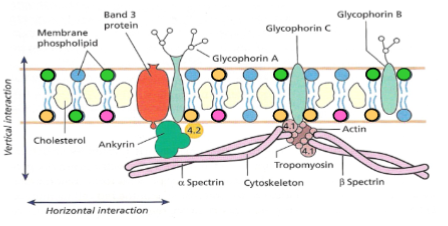
Spectrin, Ankyrin, Protein 4.1 and Actin
-
What is spectrin?
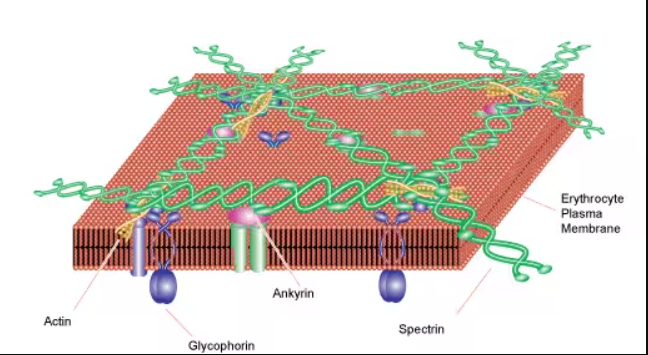
-The most abundant peripheral protein
-Composed of alpha and beta chains
-Very important in RBC membrane integrity
+Binds with other peripheral proteins to form the cytoskeletal network of microfilaments
-Controls biconcave shape and deformability of cell
-If denatured red blood cell becomes spherical, Loses flexibility
-
What is Ankyrin?
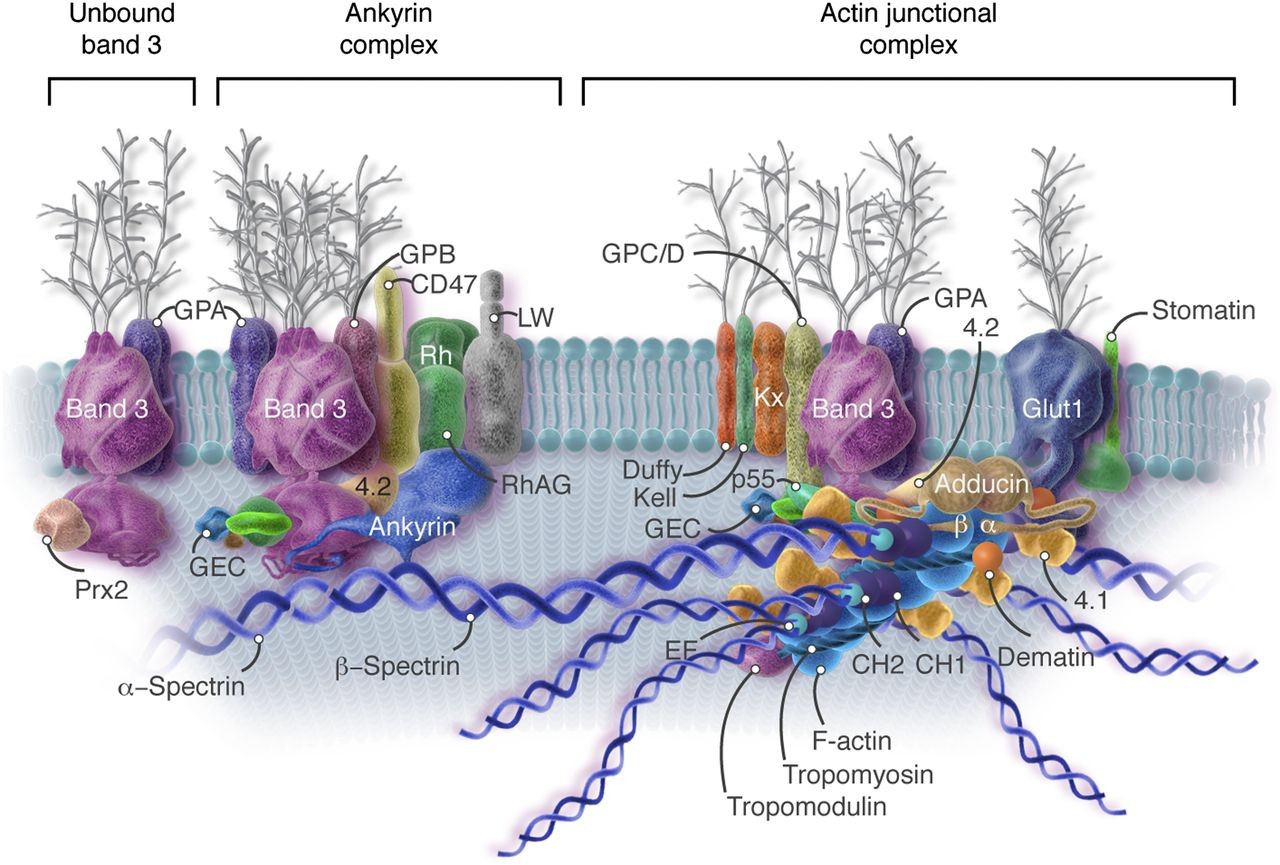
-Primarily anchors lipid bilayer to membrane skeleton via interaction with spectrin and Band 3
-
What is protein 4.1?
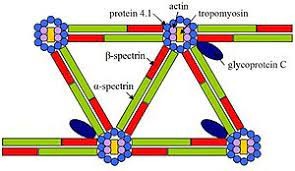
-May link the cytoskeleton to the membrane by means of its associations with glycophorin
-Stabilised interaction of spectrin with actin
-
What is Actin?
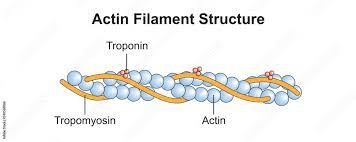
-Responsible for the contraction and relaxation of the membrane (Strong cohesion between bilayer and membrane skeleton maintains surface area)
-
What are carbohydrates?
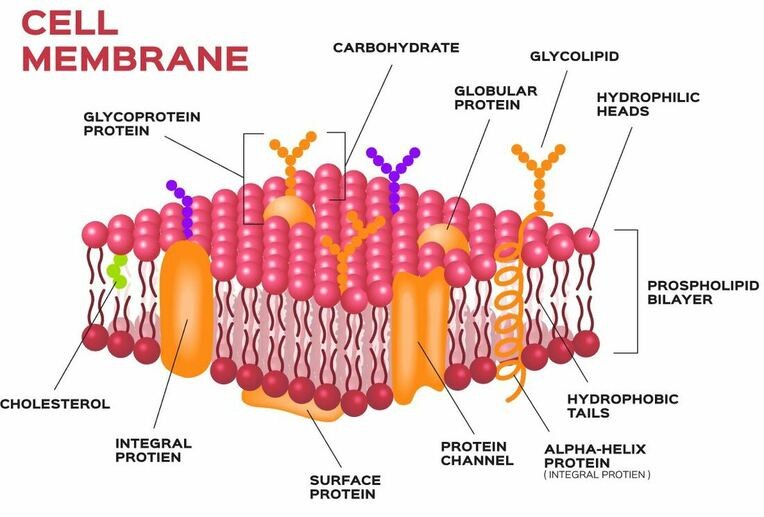
-They occur only on the external surface of cell
-The carbohydrate groups are attached to proteins and lipids by a process called glycosylation
-They may contain 2-60 monosaccharide units, either branched or straight
-The carbohydrate gives a cell identity; the distinguishing factor for human blood types
-
State ATLEAST 5 different monosaccharides that are found on the red cell membrane
-Galactose
-Mannose
-Fucose
-N-acetylgalactosamine
-Glucuronic acid
-Glucose
-Sialic acid
-N-acetylglucosamine
-
What determines are blood group?
Blood group antigens, which are found on the red cell membrane
-
Statement: The Majority of antigens are carbohydrates. Is this true or false?
FALSE
The majority of antigens are proteins; e.g. Rhesus, Duffy.
Others are carbohydrates; e.g. ABO
Others are combination of glycolipids and proteins
-
Picture illustrating idea in previous flashcard:
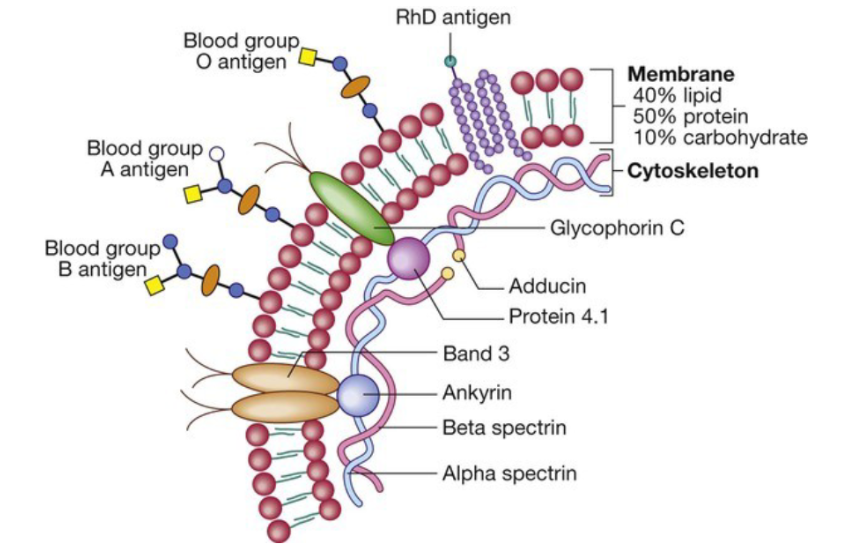
-
What is the primary function of RBC? And how is this achieved?
-Primary function of RBC is transport of respiratory gases to and from the tissues
-To achieve this, RBC traverse the microvascular system without mechanical damage and retain a shape which facilitates gaseous exchange
-The red cell membrane should be extremely tough yet highly flexible
+Cytoskeletal proteins interaction with the membrane lipid bilayer determines strength and flexibility
-
List 4 characteristics of the RBC and their importance
1)SHAPE: provides the optimum surface area to volume ratio for respiratory gases exchange
2)DEFORMABILITY, ELASTICITY: allowing for the passage through micro vessels (capillaries)
3) Regulates intracellular cation concentration
4)Acts as the interface between the cell and its environment via membrane surface receptors
-
Statement: Membrane cholesterol exists in free equilibrium with plasma cholesterol.... True or false?
TRUE
-
An increase in free plasma cholesterol results in an accumulation of what in the RBC membrane?

Cholesterol
-
RBCs with increased cholesterol appear distorted, which results in the formation of..........?
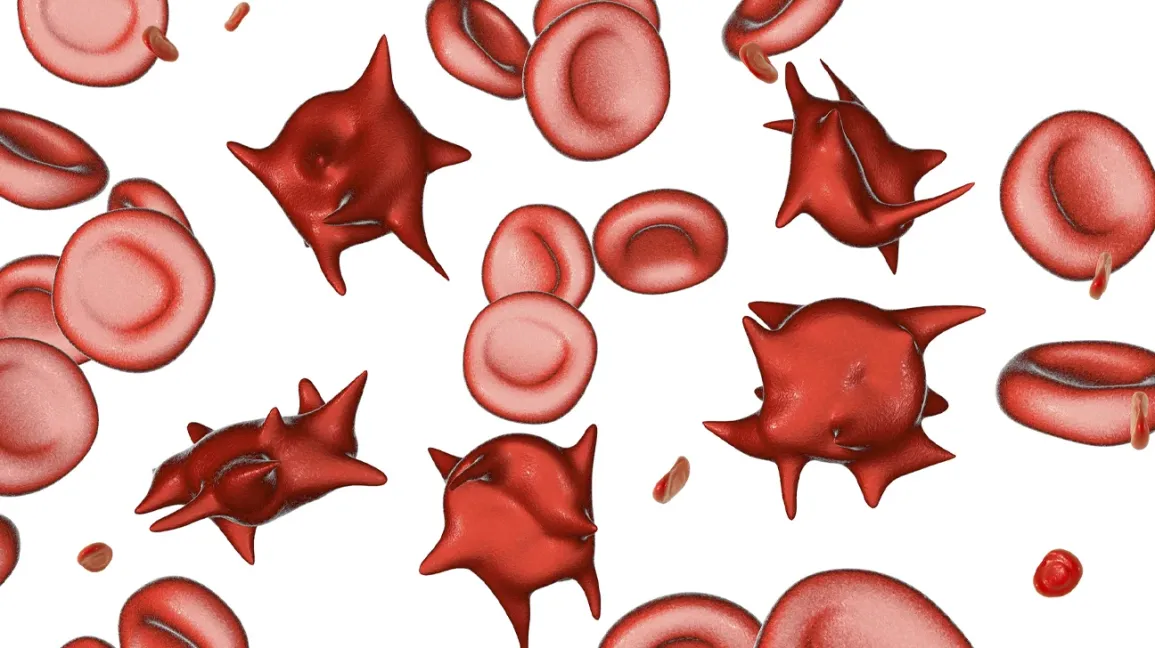
Acanthocytes
-
An increase in cholesterol and phospholipid is due to what?
Target cells; due to specifically high SA
-
What are the two possible defects in the RBC membrane?
1)Hereditary spherocytosis; Instead of RBC being shaped like a disk, the cells are round like a sphere
2)Hereditary Elliptocytosis; RBCs assume an elliptical shape, rather than the typical round shape
-
What is Hereditary Spherocytosis caused by?
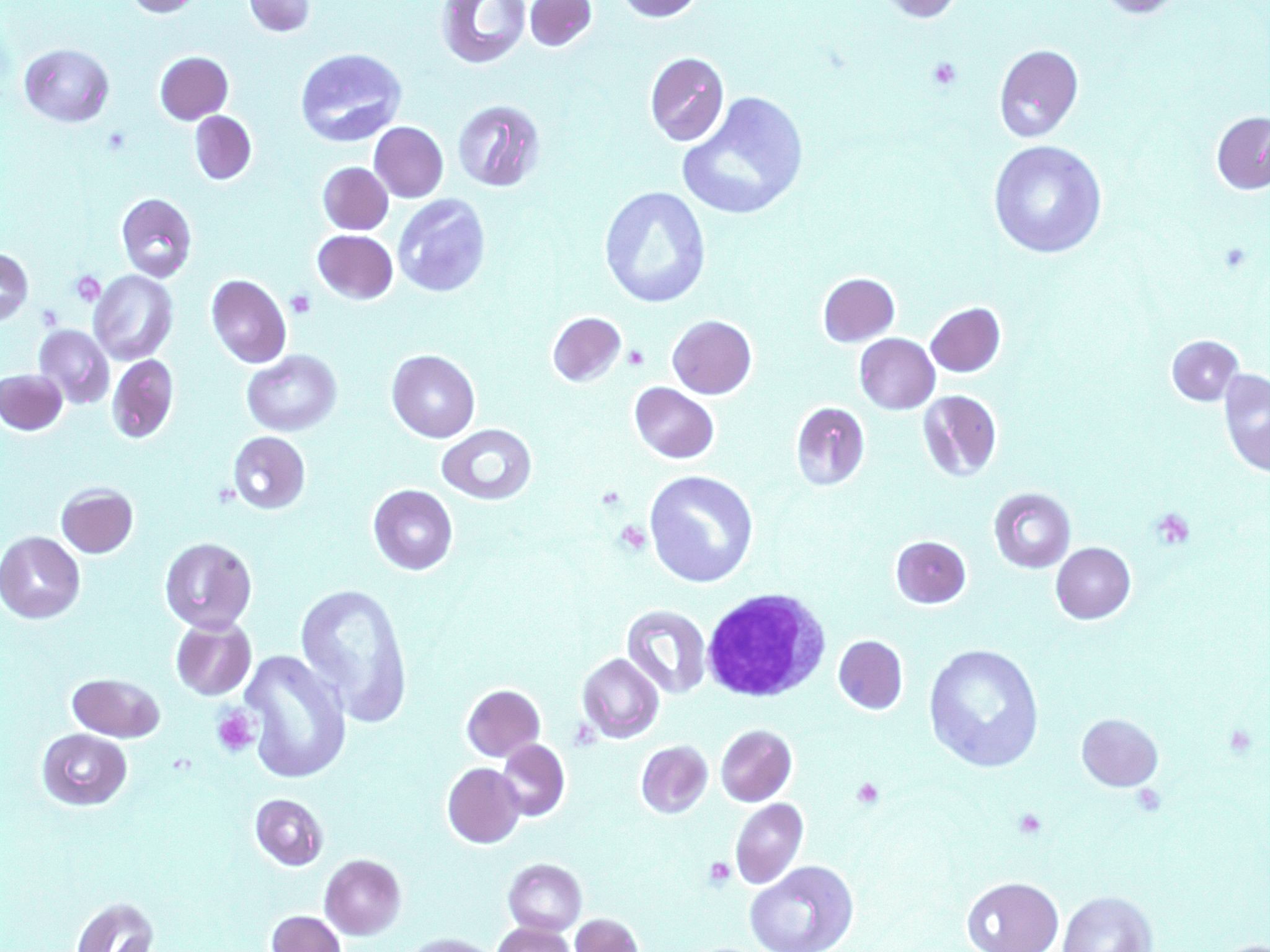
-Ankyrin deficiency or abnormalities
-a or b spectrin deficiency or abnormalities
-Band 3 protein abnormalities
-Protein 4.2 abnormalities
-
What is Hereditary Elliptocytosis caused by?
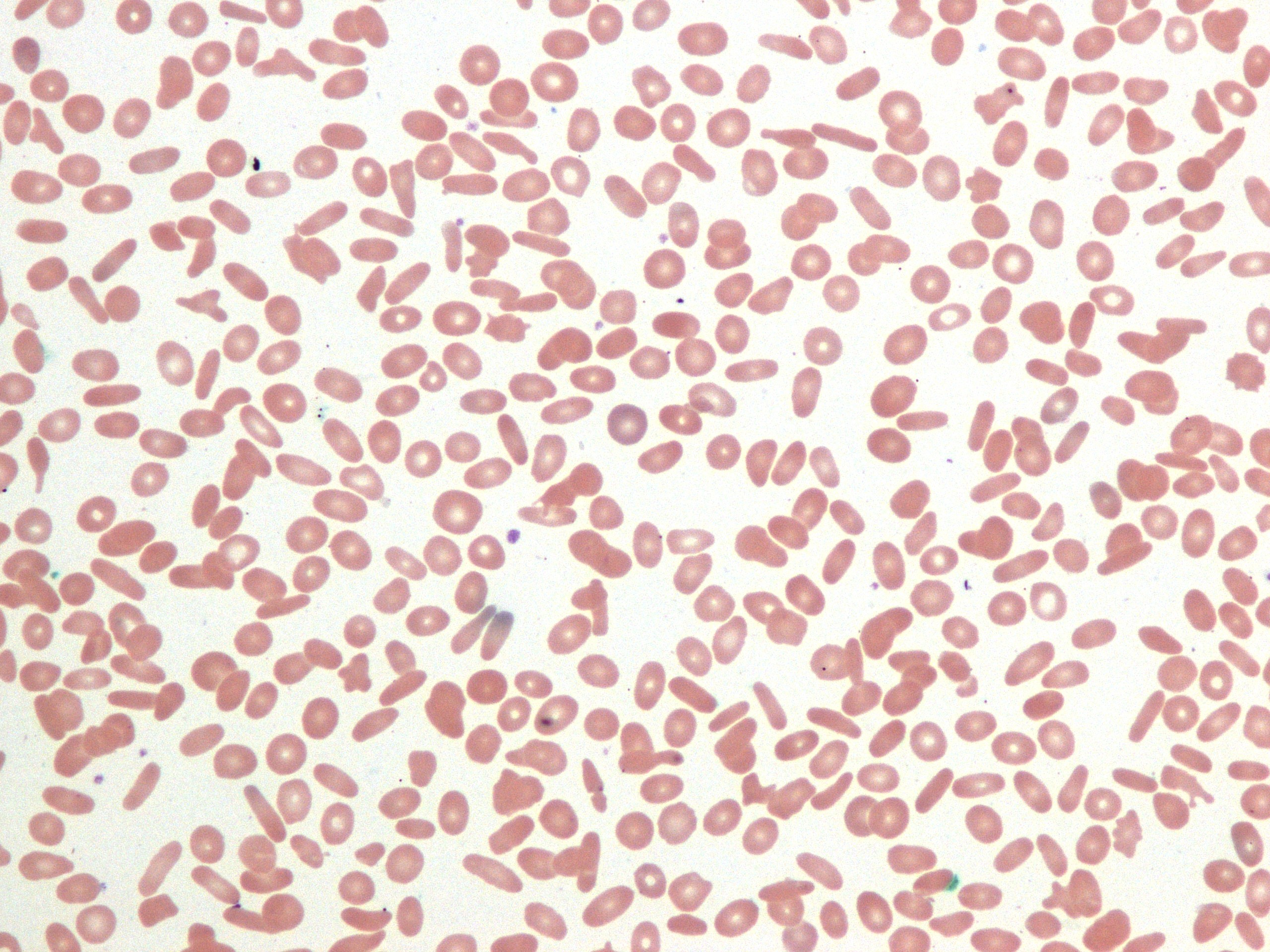
-a or b spectrin mutation - defective spectrin dimer
-a or b spectrin mutation - defective spectrin-ankyrin association
-Protein 4.1 deficiency or abnormalities
-
Picture demonstrating the various RBC shapes and sizes:
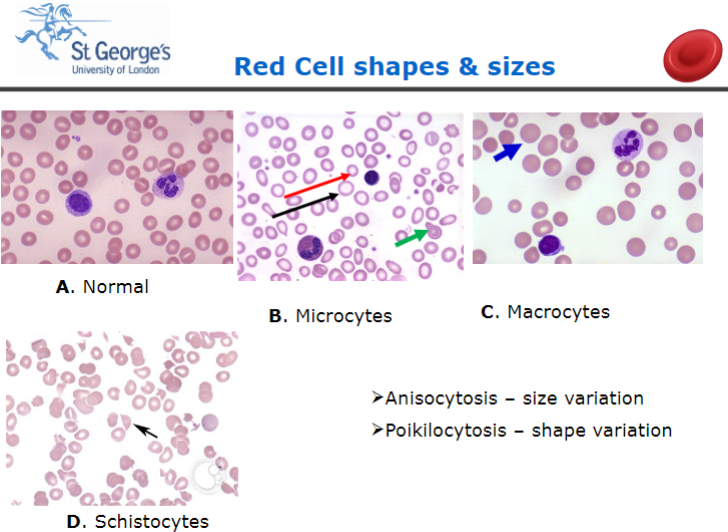
-
State some information about Haemoglobin structure
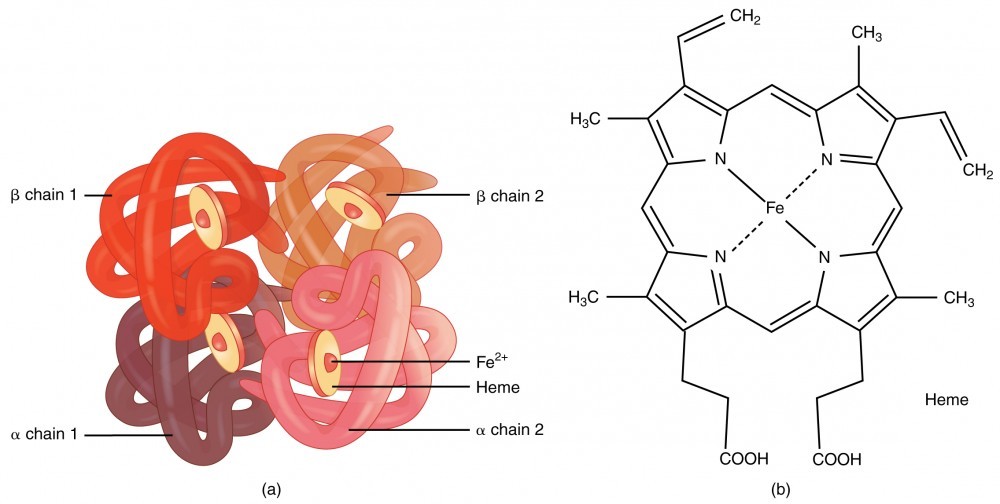
-Haemoglobin (Hb) is a globular haemoprotein-haemoproteins are a group of specialized proteins that containHaem as a tightly bound prosthetic group.-The haem is a complex of protoporphyrin IX and ferrousiron (Fe2+).-The protein here is globin: 4 polypeptide subunits-2 α-globin chains-2 β-globin chains
-
What is the Adult amounts of haemoglobin in adults (both male and female)?
Haemoglobin content (ADULT)Female 11.5- 15.5g/dlMale 13.5- 17.5g/dl
-
What does Haemoglobinopathies mean?
A group of recessively inherited genetic conditions affecting the haemoglobin component of blood
-
Inherited disorders of Hb can be split into 2 categories: what are these categories
1. Thalassaemias
2. Sickle Cell Disease
-
What are the two main metabolic pathways?
-The pentose phosphate pathway
-The glycolytic pathway
-
What are the two main enzymes associated with these pathways?
1.Glucose-6-Phosphate Dehydrogenase (G-6-PD)2.Pyruvate Kinase (PK)
-
State some information about the Glycolytic pathway (PK enzyme)
- Glucose is metabolized and generates two molecules of ATP(energy).- Generates 90- 95% of energy needed by RBC’s- Functions in the maintenance of RBC shape, flexibility and the cation pumps (Na/K pump)
-
Outline the series of reactions in the glycolytic pathway
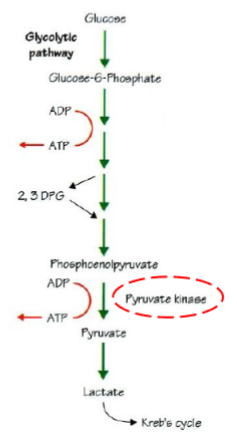
-
What is a PK deficiency, and what happens during a PK deficiency?
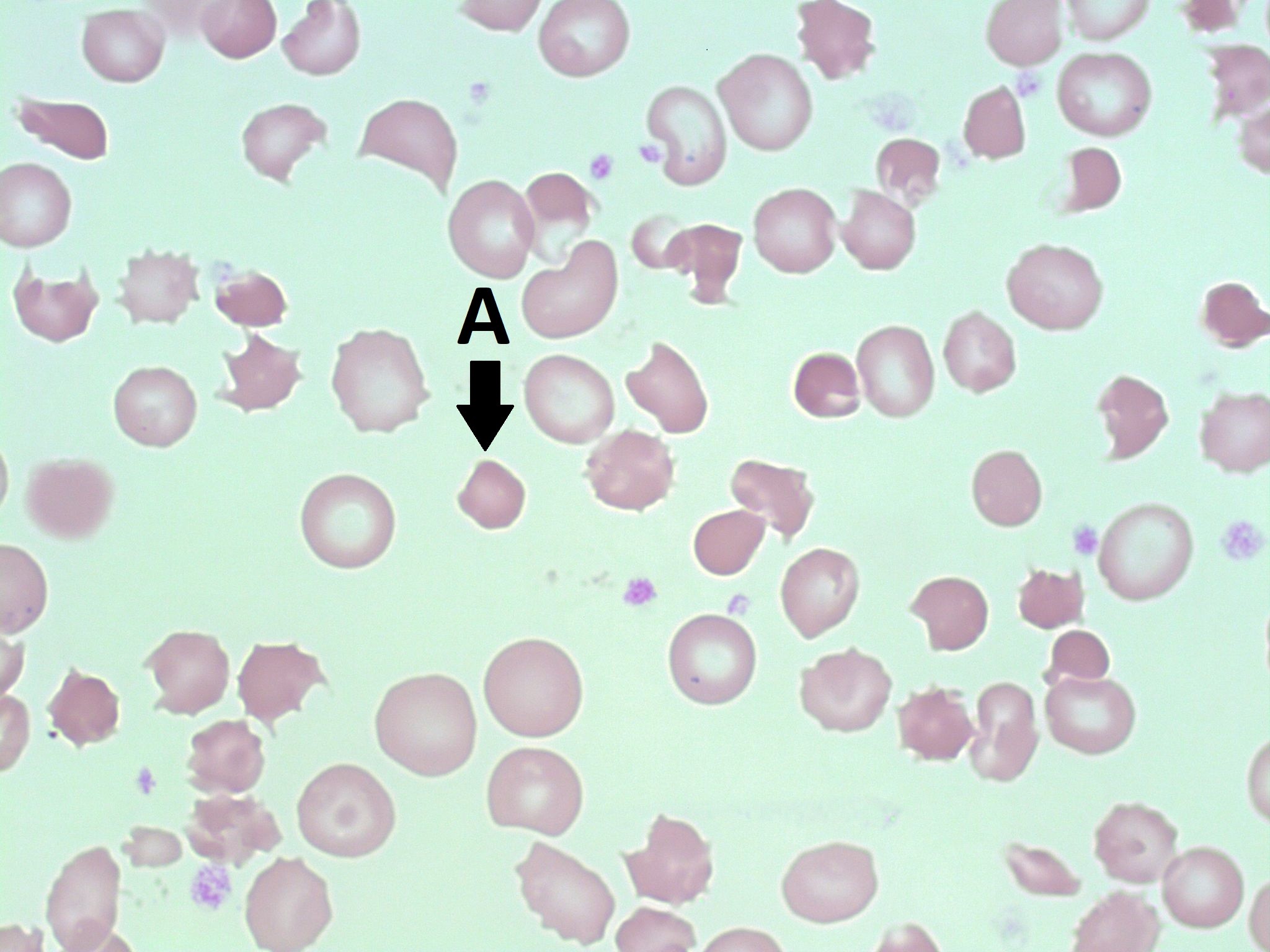
Pyruvate kinase deficiency is a condition in which red blood cells break down faster than they should.
-ATP is depleted
-Cells lose large amount of potassium and water, becoming dehydrated and rigid
-Causes chronic non-spherocytic haemolytic anaemia
-
State some information about the pentose phosphate pathway
- The pentose phosphate provides the reducing power,NADPH- NADPH maintains glutathione in the reduced form (GSH)- RBC uses GSH to protect it from oxidative damage;
-
Outline the series of reactions in the pentose phosphate pathway
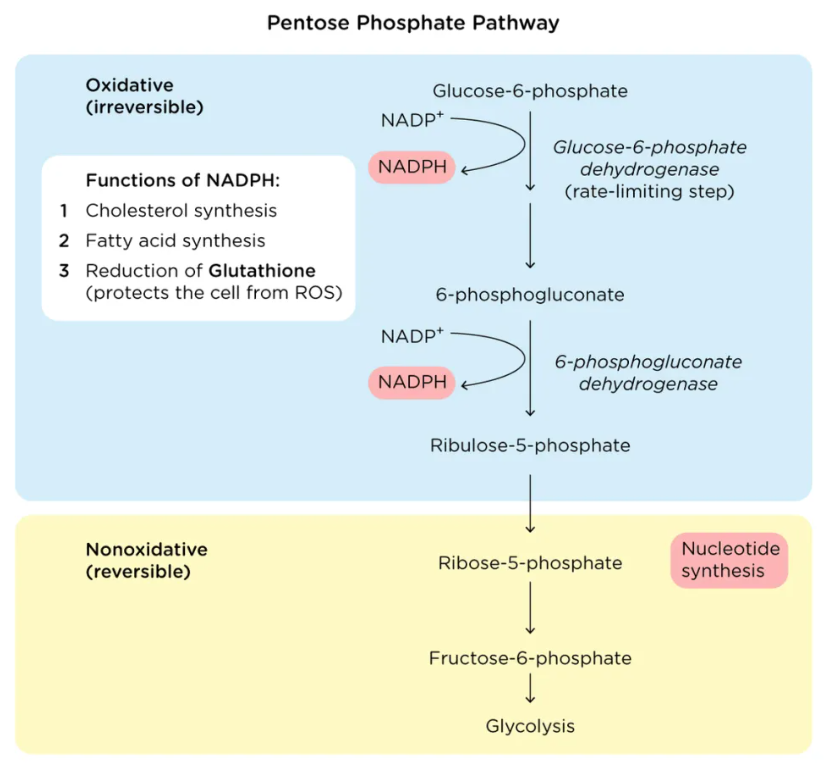
-
What is another name for the Pentose phosphate pathway?
Hexose monophosphate shunt
-
What causes a G6DP deficiency?
G6PD deficiency is inherited
-
What does a G6DP deficiency do?
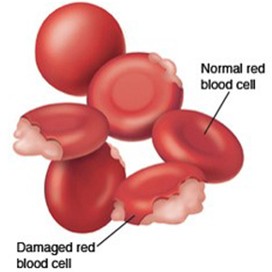
-NADPH and GSH generation impaired
+Acute intravascular haemolysis on exposure to oxidant stress: oxidativedrugs, fava beans (broad beans) or infections;=dark urine- Hb precipitation – Heinz bodies
- G6PD deficiency, most common known enzymopathy, estimated to affect 400 million people worldwide.
RBC effected are called bite cells
-
A general summary for this lecture:
RBC membrane is made of lipids, proteins and carbohydrates.- Glycophorin and spectrin are among the most importantproteins.- Spectrin plays important role in membrane deformability &stability- Biconcave disc shape creates an advantageous surfacearea/volume relationship- Changes to SA/V ratio result in more spherical shape withless redundant surface area, and thus less capacity fordeformability and diminished survival.- Key metabolic pathways required to maintain red cell integrityand deformability.

